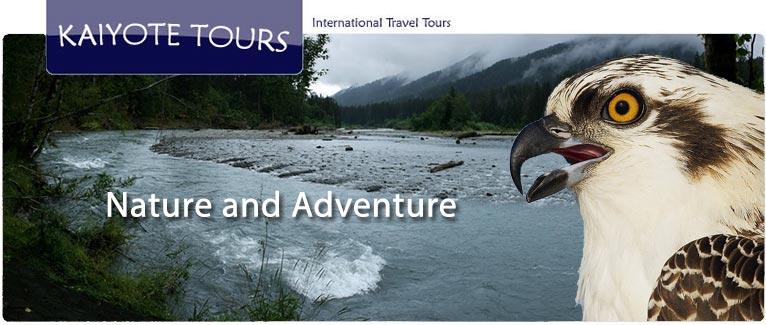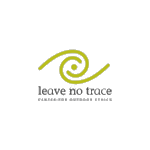Olympic National Park Guided Fly Fishing

If you are interested in Olympic National Park Guided Fly Fishing, come and join us at Kaiyote Tours!
Day Trips: We offer full day fishing trips on lakes and along rivers in Olympic National Park and private locations.
Over-night Backpacking Trips: There is nothing more wonderful than waking up in the backcountry wilderness of Olympic National Park; mornings are quiet and serene. Night skies are brilliant with stars and the air is clean and pure. To awake next to a crystal-clear lake or stream is an incredible experience. Along the coast, the sound of the ocean surf will bring sweet dreams to you. Nature has an amazing way to bring you closer to yourself and all that truly matters.
So many choices: Do you want to fish and/or camp deep in the old growth forest or atop the mountain meadows or in the massive valleys of glacier fed rivers or along the ocean coast? There is great fishing and camping all year round in Olympic National Park.
What Location?
Click here to view itineraries by location
What level of Difficulty?
Click here to view itineraries by level of difficulty
What time of Year?
Click here to view itineraries by season
How Many Nights?
Click here to view camping itineraries
Pricing for day trips
2 - 4 people: $280 per person
Solo traveler: $465 per day
Fees for day trips include lunch, snacks, water and fishing gear. Although we provide all the necessary fishing gear, you can also bring your own gear. Not included: Olympic National Park entrance fee. If you already have a national park pass, please bring it along.
Pricing for over-night backpacking trips
2 - 4 people: $365 per person/per day
Solo traveler: $565 per day
Camping fees include fishing gear, camping gear, food and backcountry permits for Olympic National Park. Although we provide all the necessary gear, you can also bring your own gear. Not included: Transportation to and from trailhead and National Park entrance fee for your vehicle. If you already have a national park pass, please bring it along. If you will not have a car, we can make transportation arrangements for you.
Reservations: In Olympic National Park, back-country camping permits can be issued six months in advance. Locations such as the Sol Duc, 7-Lakes Basin, Blue Glacier, Royal Basin and Grand Valley are "quota" areas and campsites within these areas often book up six months in advance. The quota areas allow for only a specific number of people to camp each night. If you are interested in any of the quota areas, we recommend contacting us and making a reservation as soon as possible.
Call us at 970-556-6103 or email us at KaiyoteTours@gmail.com to book your trip!
Concerned about carrying a heavy pack?
If you want to go camping and are concerned about carrying the weight, you can have your gear carried by a porter. Our porters can carry up to 50 pounds. One porter can carry the gear for almost two people or one porter can lighten the load for a group. It is best to figure on having one porter per two people. The cost is $175 each way per porter. You can hire a porter for only the hike in, if you want to carry your gear out.
Personal items required to bring (not included)
Required to bring:
1) Medications and/or Epi pen that you require
2) Durable water bottle; 1 liter
3) Sunscreen and lip balm
4) Sunglasses
5) Fishing hat
6) Small personal emergency kit
Included in camping fee
1) Fishing gear
2) Tent
3) Sleeping bag
4) Sleeping pad
5) Backpacking pack
6) Bear canister (hanging food prohibited)
7) Stove and fuel
8) Water filter
9) Food: Let us know if you require coffee/caffeine, vegetarian or anything special.
10) Day pack
11) Bug spray
12) Rain poncho
13) Headlamp
Suggestion to bring:
2) Camera
3) Compact binoculars
4) Swimsuit
Kaiyote Tours Booking and Cancellation Policies
Day Tours: Full payment is due 72 hours prior to tour. There are no refunds within 72 hours of tour.
Over-night Backpacking Policies: At the time of reservation, a non-refundable fee of $20 per person per day is due. The remaining balance is due 3-months prior to the trip and is non-refundable. If you are reserving a trip within 3-months of start date, then the full amount is due at the time of reservation and is non-refundable.
We accept Visa, MasterCard, Discover, American Express and PayPal.
Kaiyote Tours is authorized by the National Park Service, Department of Interior, to conduct services in Olympic National Park.
**Below the images, you will find information about Pacific Salmon
Pacific Salmon, Oncorhynchus
Salmon are part of the fish family called Salmonidae, which includes Pacific Salmon and Pacific Trout. Their range extends north from Alaska and Russia all the way south to Taiwan and Mexico. The term "salmon" comes from the Latin word salmo, which means "to leap" and there are two genera. The genus Salmo contains only the Atlantic salmon, found in the north Atlantic and the genus Oncorhynchus, contains the Pacific salmon and trout. Oncorhynchus is Greek for “bent snout”, referring to the hooked jaws of males during the mating season.
Ocean Going Trout: Steelhead, Rainbow Trout, Dolly Varden and Char have similar life cycles as the salmon, but trout generally do not die after spawning.
Pacific Salmon are anadromous, migratory and die after spawning. The word “anadromous” refers to fish that hatch in fresh water, migrate to salt water, and then return to freshwater to mate and reproduce. Most fish will return to the same location where they hatched and it is believed that they find their way home by several indicators: smell, position of the sun and sensing specific particles in the water. There are five species of Pacific Salmon and all five species spawn on the Olympic Peninsula.
Pacific Salmon species in order of average size:
Chinook Salmon (Oncorhynchus tshawytscha), also known as: King, Blackmouth or Chub salmon. Chinook are the largest of all Pacific salmon, ranging from 10 – 50 lbs (4.5 to 22.7 kg). The name “Tyee” is used in British Columbia to refer to Chinook over 30 pounds. In the Columbia River watershed, extremely large Chinook were once referred to as “June Hogs”. Largest fish ever caught was 126 lbs (57 kg) in British Columbia. Chinook salmon are known to range as far north as the Mackenzie River in the central Canadian arctic and as far south as the central California coast. Chinook usually spend 3 – 5 years in the ocean before returning home to spawn.
Chum Salmon (Oncorhynchus keta), also known as Dog, Keta, Silverbrite or Calicos. This species has the widest geographic range of the Pacific species, from the eastern Pacific north of the Mackenzie River in Canada to south of the Sacramento River in California and in the western Pacific from Lena River in Siberia to the island of Kyūshū in the Sea of Japan. Some Chum travel more than 2,000 miles (3,200 km) up the Yukon River to spawn. Chum average 10 – 20 lbs (4.4 to 10.0 kg). The Chum record fish was 42 lbs (19 kg) in British Columbia. Chum average lifespan is 3 – 5 years.
Coho Salmon (Oncorhynchus kisutch), also known as Silver salmon or Silvers. This species is found throughout the coastal waters of Alaska and British Columbia and as far south as Central California Monterey Bay. They average 7 to 11 pounds (3.2 to 5.0 kg). The record Coho was caught in Lake Ontario and weighed 33 lbs (15 kgs). Coho usually return to spawn within 2 years from hatching.
Sockeye Salmon (Oncorhynchus nerka), also known as Reds, Kokanee or Blueback salmon. Unlike most adult Pacific salmon which feed on small fish, shrimp, and squid, Sockeye feed on plankton that they filter through gill rakers. Kokanee salmon are the land-locked form of Sockeye Salmon. Sockeyes average 5 – 10 lbs (2.3 to 7 kg). The record fish was 16 lbs (7kg), caught on the Kenia River in Alaska. Sockeye usually spend 1-2 years growing in fresh water and then 2-3 years in the ocean, before returning to spawn.
Pink Salmon (Oncorhynchus gorbuscha), also known as Humpbacks or Humpies are the smallest of the Pacific species, with an average weight of 3 - 4 lbs (1.5 - 1.8 kg), with a record catch of 15.4 lbs (7 kg), caught in the Stillaguamish River, Snohomish County in Washington State. Pink salmon have a strict two-year life cycle, odd and even-year populations do not interbreed. In the state of Washington, Pink salmon runs occur during odd numbered years (2019, 2021, 2023 etc.)
Salmon Life Cycle: The salmon life cycle includes seven stages: egg, alevins, fry, parr, smolt, adult, and kelt.
Egg Stage: Salmon eggs are laid in freshwater streams, typically at high latitudes. The female salmon creates a shallow depression in the river by using her tail (the caudal fin) to lift away small gravel and debris. This depression is a called a “redd” and will create a low-pressure zone, that will help keep the eggs from floating down stream. The redd may contain up to 5,000 eggs, which vary in color from orange to red, depending on the salmon species. The male will deposit sperm (called milt) over the roe. The female then covers the eggs by disturbing gravel upstream from the redd. The female may make as many as seven redds before her supply of eggs is exhausted.
Alevins: After several months, eggs hatch into tiny salmon called alevins. Because they are easily hurt or eaten, alevins hide under the gravel to keep safe. Alevins stay close to the redd for a few months. They only feed from the yolk sac attached to their bodies and when they have consumed the entire yolk sac, the fish emerge from the gravel and then are called “fry”.
Fry: Fry swim to the surface of the water, fill up their swim bladders with oxygen, and begin to feed and grow.
Parr: At one year, salmon enter the parr stage and develop camouflaging vertical stripes. They eat insects and grow to about the length of a finger and are sometimes called “fingerlings”. The parr stay for six months to three years in their natal stream before becoming smolts.
Smolt: The young salmon swim downstream to where the river meets the ocean and here the salmon find brackish water; a mixture of fresh and salt water. At this stage, the smolts can live in both freshwater and saltwater and they spend a portion of their out-migration time in brackish water, so their body chemistry becomes accustomed to “osmoregulation” in the ocean: The ability to regulate the amount of water and salt in their bodies. This transition from a freshwater to saltwater existence is called smoltification. Once smoltification has been achieved, the salmon swim out to sea to feed and grow into adults.
Adult: Depending on the species, salmon can spend one to eight years in the open ocean and undertake extensive ocean migrations of over 3,000 miles while they gradually become sexually mature. Most adult Pacific salmon feed on small fish, shrimp, and squid, except for Sockeye, which feed on plankton that they filter through gill rakers. It is unknown exactly how salmon detect their natal streams, but it is suspected that scents and chemical cues, as well as the sun, play an important role in the homeward migration. During their journey, their bodies instinctively prepare for spawning and salmon will undergo overt physical changes: They may grow a hump, develop canine-like teeth, or develop a kype (a pronounced curvature of the jaw in male salmon). Once the salmon reach freshwater, they stop feeding. The migration up freshwater rivers to spawn can be a long exhausting journey. Chinook and Sockeye salmon from central Idaho for example, travel over 900 miles (1,400 km) and climb nearly 7,000 feet (2,100 m) from the Pacific Ocean as they return to spawn. The taxing journey draws energy from their fat storage, muscles, and organs, except for the reproductive organs.
Spawning: The dominant male will court the female and upon spawning, they release eggs and milt simultaneously. The eggs will settle into the gravel, and the female will cover the eggs with loose gravel and move upstream to prepare another redd. Eventually, both the males and females die, supplying the river habitat with nutrients and the seeds of the next generation that will someday return to continue the cycle.
Kelt: The longer the fish remain in fresh water, the further they deteriorate. After spawning, salmon are known as kelts and all Pacific salmon die, and most within a few days. (Atlantic Salmon: 5 to 10%, mostly female, return to the ocean where they can recover and spawn again)
Issues of Decline: Most of the reasons for the decline in all salmon species is due a combination of factors: Over-fishing, lack of spawning habitat, hydro-power development and dams without fish ladders, loss of freshwater and estuarine habitat, poor ocean conditions, warmer oceans and fish-hatchery practices.
Fish Hatcheries: Fish that are raised in hatcheries are marked for future identification before they are released into the wild and this usually happens during the parr stage and during this stage the fish are sometimes called fingerlings because they are about the size of a finger. Most fish will have their adipose fin clipped off; this fin is located in between the dorsal fin and the tail fin, on the upper side of the fish. When the adipose fin is clipped, a 1 mm wire tag is sometimes also inserted into the cartilage of the fish's snout. The wire tag will identify the hatchery where the fish was reared and the time of release. Occasionally a fish might get a GPS tag so its migration route can be documented. When people fish the waters surrounding the Olympic Peninsula, they are only allowed to keep “hatchery fish”. The “wild” fish, those which still possess an adipose fin, must be released back into the wild. The U.S. Fish and Wildlife Service will often have staff at boat launches and docks who are not only checking for bag limits and fish license requirements, but they also scanning the fish for tags to document what fish, from which hatchery are being caught and also the age of those hatchery fish.
Olympic Peninsula Rivers: On the Olympic Peninsula there are eight major spawning rivers for Pacific Salmon: The Elwha, Sol Duc, Bogachiel, Hoh, Quinault, Queets, Dungeness, and Skokomish Rivers. These rivers and their tributaries create over 3,500 miles of river habitat on Olympic Peninsula and an extensive amount of spawning habitat. Thirteen of the fifteen major rivers in Olympic National Park are designated “Wild and Scenic” under The U.S. Wild and Scenic Rivers Act.
Salmon Cascades: One of the best placing to see salmon migrating in Olympic National Park is at Salmon Cascades along the Sol Duc River during the autumn, usually starting in mid-September.











 Follow
Follow

